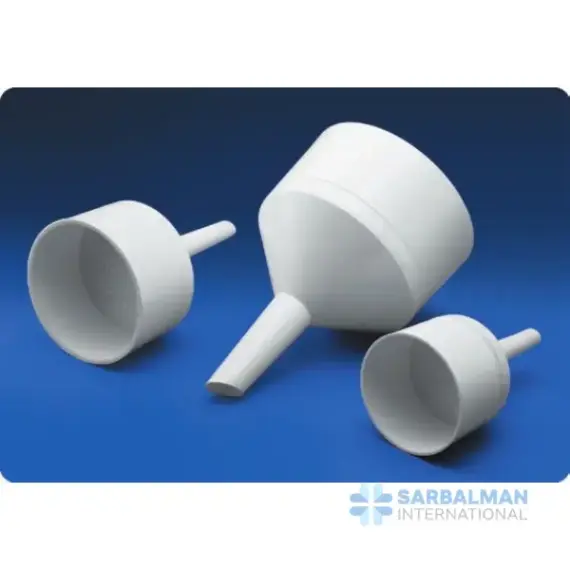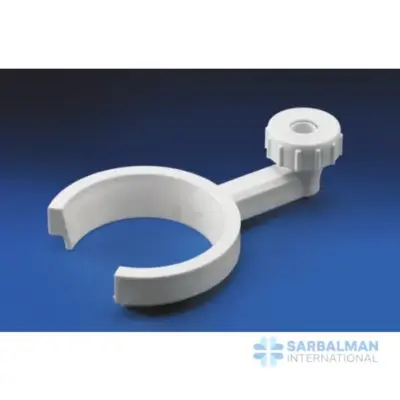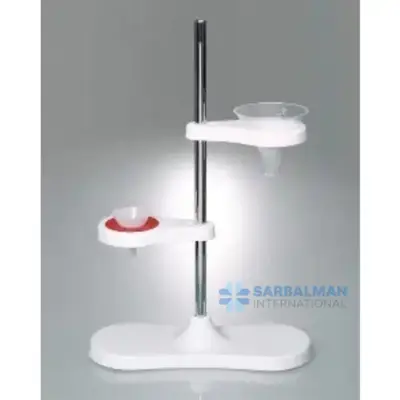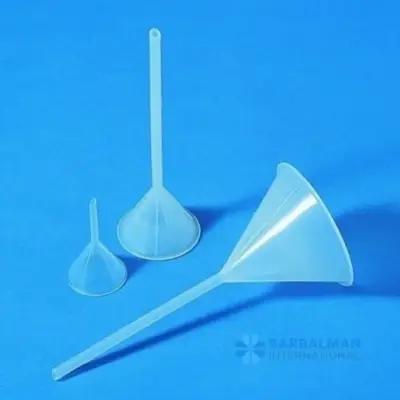Buchner Funnel
Free!
A Buchner funnel is a flat-bottom, perforated filtration funnel designed for vacuum use with filter paper. It speeds separations, produces drier cakes, and handles larger batches than gravity funnels. Choose porcelain, polypropylene, or PTFE to match your chemicals, pair it with a vacuum flask and adapter, and get faster, cleaner filtrations for teaching labs, research workflows, and routine QA sample prep.
Description
A Buchner funnel is a rigid, straight-sided filtration funnel with a flat, perforated plate that holds filter paper for vacuum-assisted separation. Placed on a side-arm vacuum flask with a rubber adapter, it uses gentle suction to draw liquid through the paper, leaving solids behind. The design speeds up filtration, improves drying, and provides a wide, stable surface for cakes compared with conical funnels.
Key features and benefits:
• Fast vacuum filtration for higher throughput
• Flat perforated plate supports even filter cakes
• Compatible with standard filter papers and vacuum flasks
• Available in porcelain, polypropylene, and PTFE for chemical and temperature needs
• Straight walls minimize channelling and edge loss
• Simple, durable construction for teaching, QA, and routine prep
Common use cases and industries:
• Recrystallization, salt recovery, and precipitate collection in research and teaching labs
• Quality control sample prep in pharmaceutical, food, and environmental testing
• Clarifying suspensions before analysis or downstream processing
Comparison guidance:
• Versus gravity funnels: Buchner funnels are faster and yield drier solids due to vacuum assistance
• Versus sintered glass funnels: Buchner funnels use replaceable filter paper, reducing cross-contamination risk and simplifying cleanup
• Versus Hirsch funnels: Buchner funnels provide larger diameters for medium to large batches
Selection and quality notes:
• Choose diameter to match expected solids load and available vacuum flask neck size
• Pair with a properly sized rubber adapter to prevent leaks and maintain vacuum
• Verify chemical compatibility of the chosen material and select filter paper grade to suit particle size and flow rate








